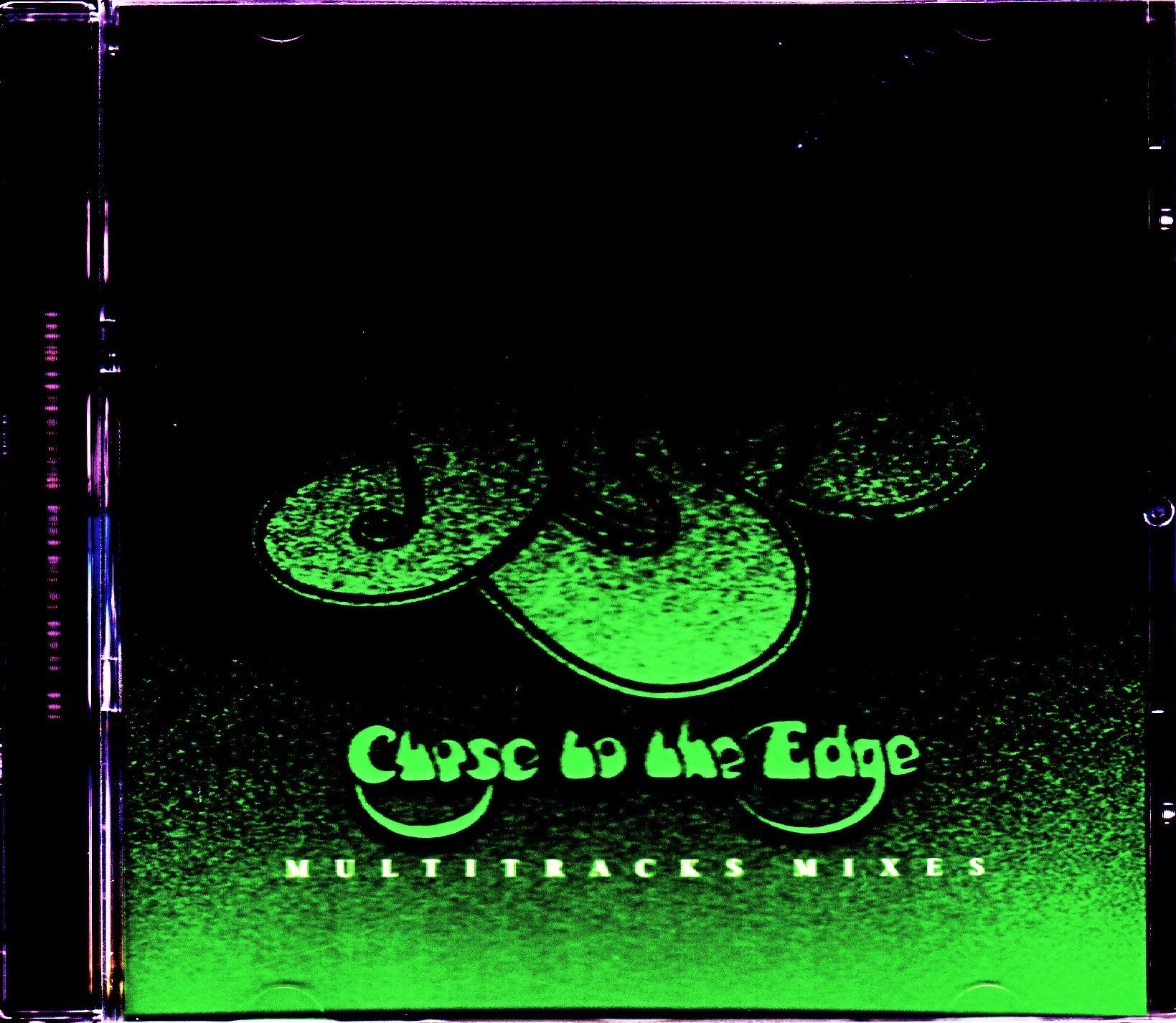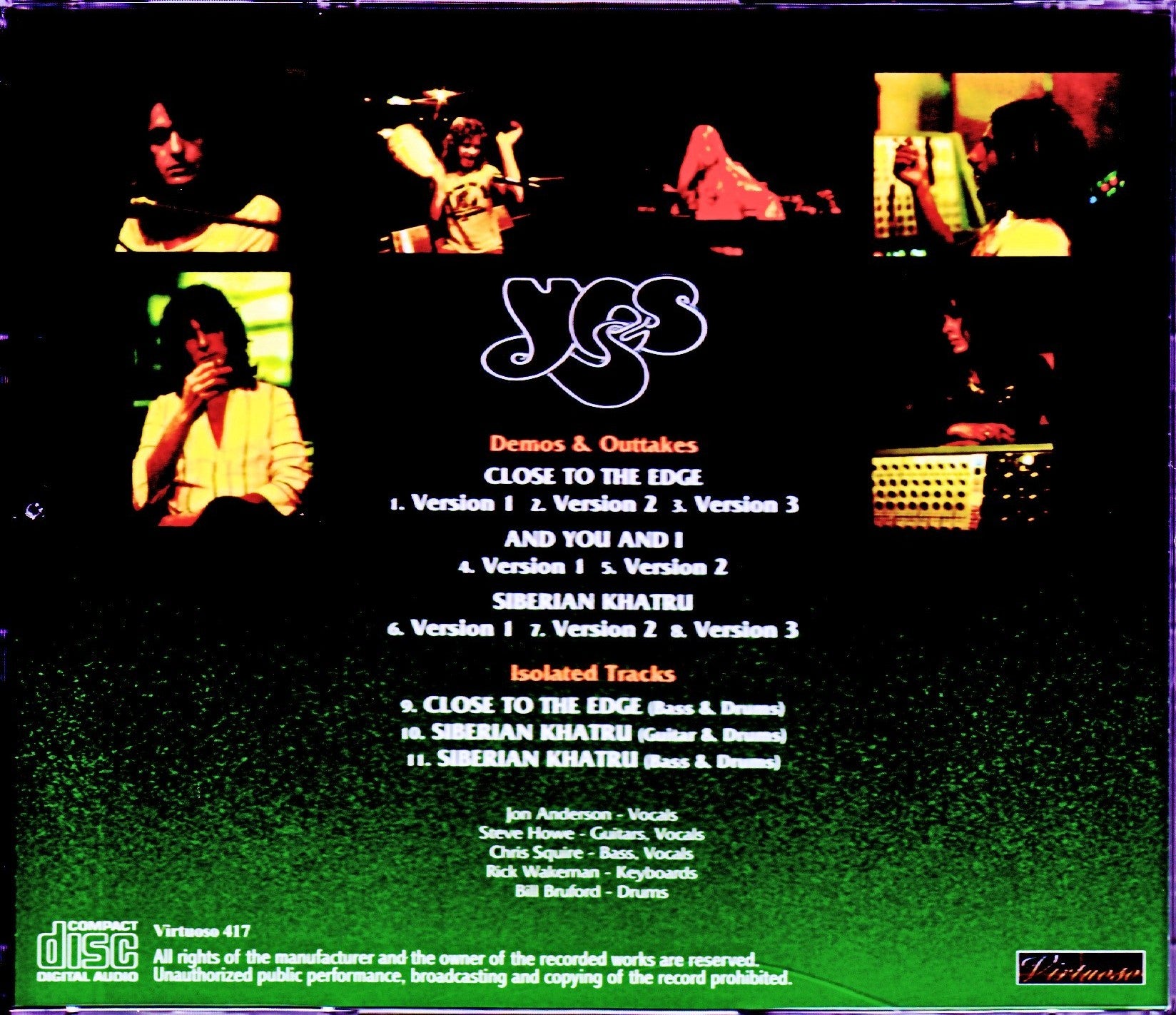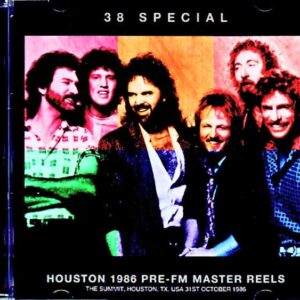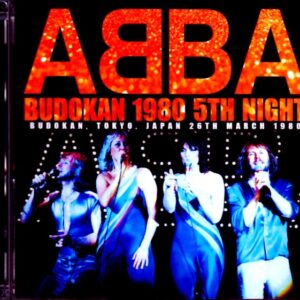Description
“Kisai” is a super masterpiece that goes beyond being one band’s masterpiece, and is even a treasure of the music genre “progressive rock.” The super-excellent demo album that takes you behind the scenes of its production will be preserved forever. The artwork is too simple, and it is a masterpiece with 3 songs in total. While maintaining the beat feel of a rock band, the song is grand and majestic, like a symphony. What is evolving rock? What is symphonic rock? There is probably no musical work that embodies the ideal image as easily as “Kisai”. Even now, almost 50 years have passed, its brilliance has not faded in the slightest, and it has become a gigantic presence that even those involved in YES, who created it, cannot surpass. I couldn’t help but write a lot of things now, but what I want to say is that “the studio where Crisis was produced was the site where a miracle happened.” This work is a studio album that allows you to experience the process of how this miracle was assembled. [Sound quality that exceeds the level of a demo] To put it bluntly, this work is a collection of demo tracks for “Kirishi”. Contains 3 takes of “Kirishi”, 2 takes of “Comrade”, and 3 takes of “Siberian Curtur”, all of which are in the process of being produced, and are all significantly different from the finished version (3 additional takes of bonus tracks are also included). (but that will be explained later). In other words, it’s like a sketch of a famous painting. However, the music that flows in reality cannot be fully expressed in such words. First of all, the sound is very different from what you remember when you say “demo”. Although it is completely different from the final version at first listen, the sound quality itself is not inferior to the final version at all. Although it is a sound source that suddenly appeared in the early 2010s, there are no dubbing marks at all, and if done poorly, it is even fresher than the official remastered version that was processed later. It is an ultra-excellent sound board sound source that shatters the fixed concept that “demonstration = poor sound” to pieces. Furthermore, what surpasses the finished version is its vividness. This depends on the take, but although some processing such as effects has been applied, most are less than the final version. In particular, Jon Anderson’s vocals are more “live voice”, and you can feel the “closeness” of the guitar and drums as if they were playing in your ears. [Highly complete demo that can be enjoyed as a separate version] Crisis (3 takes) Such a sound depicts another version of the super masterpiece “Crisis”. Now let’s talk about each song. First up are three demos of the title track “Kirishi”. Each completed version has a different length: “Crisis #1” is “3 minutes 21 seconds,” “Crisis #2” is “13 minutes 27 seconds,” and “Crisis #3” is also “3 minutes 21 seconds.” “Kirishi #1” starts with “The Solid Time Of Change”, but it is a short arrangement that quickly moves into the highlight from there. It’s like a single edit, but it’s not just short, but each take is different, the vocal melody is different, and the carefully layered performances are also (partially) different. It’s completely my imagination, but it’s a take as if they were trying to make a normal-sized song from the intro and the most delicious part. The replacement “Crisis #2” is a longer version that approaches the finished version (18 minutes 41 seconds), but the ensemble is rougher. The performance itself is not rough, but more like a rough mix. Not only is the Moog not overdubbed, there are significantly fewer choruses and effects, and the performance sound is exposed. And again, the performance and vocal take are different. Although it’s not so simple that it could be called a skeleton, it’s a take that seems to be working out the structure of a major song before embellishing it. The following “Crisis #3” is again a short version of 3 minutes. It’s a take that seems to be a more complete version of “Crisis #1,” and the ensemble itself is quite close to the finished version. However, even with the inclusion of vocals, you can still see the sweetness of the song. It is said that Eddie Offord put together great songs by cutting and pasting tape, and this may be one of those parts. Comrades (2 takes) “Comrades” also includes two takes of different lengths, “Comrades #1” is “10 minutes 57 seconds” and “Comrades #1” is “2 minutes 40 seconds”. First of all, “Comrade #1” is the only take in this work that is longer than the finished version (9 minutes 59 seconds). I can’t help but expect a more grandiose song than the final version, but what emerges is the opposite world. Although the basic structure of the song remains the same, there are clearly fewer decorations such as choruses, effects, and overdubs, giving it a rawer finish. There are no steel guitars in the 4 minute range or 9 minute range. Also, the most surprising thing about the length is the ending. While the final version reprises the theme, this take ends with a completely different melody. Although I feel like it lacks a little more detail, this is still impressive. It is one of the greatest hidden treasures in this work, making you feel the other possibilities of famous songs. “Comrade #2” is a short song, but it also includes a steel guitar, making it more complete. Maybe it was elaborated on each part. Siberian Curtur (3 takes) The last “Siberian Curtur” is also a total of 3 takes, one main long version and two partial short versions. “Siberian #1” is “9 minutes 21 seconds,” “Siberian #2” is “2 minutes 20 seconds,” and “Siberian #3” is “2 minutes 6 seconds.” “Siberian #1” is a vivid take that begins with a count of “1, 2, 3, 4.” John’s scat “Dududoo…” at the 3-minute mark is also very different (you can also momentarily hear the voice of the studio), and the scat “Da!” at the 7-minute mark is also not included. The guitar cutting in the chorus is loud, and the solo played on the harpsichord in the final version is also organ. And even more than that is the rawness of the whole thing. This article also touches on minor differences, but basically this work is not “locally different from the final version”. Every part feels completely different the moment you hear it. The mix is rough and the rhythm section is bare-bones, with very few decorations, as if it was a studio live performance with just the five of them. This work includes raw versions of all three songs, but this take is the most raw in terms of rawness. “Siberian #2” is a shorter version, but it is much closer to the completed version. There’s a guitar solo and John’s scat, and there are quite a few choruses and decorations. However, the effects are still very rough, and this version seems like a lot of trial and error. The last “Siberian #3” is at almost the same stage, and may be the second half of “Siberian #2”. [Individual takes extracted from the completed version multi] Such a demo alone is a treasure, but in this work, we have additionally recorded the studio soundboard of “Kirishi” when pressuring it. These are excerpted tracks from three songs on the album. “Crisis” and “Siberian Kartur” are rhythm section (bass and drums), while “Comrade” is just a guitar and drum track. The performance itself is the same as the finished version, but with only two instruments taken out, the liveliness is tremendous, and the minute details of the performance, down to the slight bends and tom turns, are extremely vivid. I can understand the gist of the song. Unlike the main demo, it’s not something you can enjoy as music, but the fun of the performance, whose expression changes drastically due to key changes, etc., far surpasses the finished version. Above all, it is an irresistible take that exposes each and every part that created the miracle. The above is a treasure collection of 11 takes and 76 minutes 43 seconds. The sound quality is more like a studio album than a demo, and it’s also a complete piece of music. And above all, it is a superb studio soundboard recording that reveals in detail the process by which miracles piled up and formed the super masterpiece “Kirishi”. This is a historic piece that is on a different level from many demo albums. Demos & Outtakes, Isolated Tracks STEREO SBD (76:43) DEMOS & OUTTAKES Close To The Edge 1. Version 1 2. Version 2 3. Version 3 And You And I 4. Version 1 5. Version 2 Siberian Khatru 6. Version 1 7. Version 2 8. Version 3 ISOLATED TRACKS 9. Close To The Edge (Bass & Drums) 10. Siberian Khatru (Guitar & Drums) 11. Siberian Khatru (Bass & Drums) Jon Anderson – Vocals Steve Howe – Guitars, Vocals Chris Squire – Bass, Vocals Rick Wakeman – Keyboards Bill Bruford – Drums







Reviews
There are no reviews yet.